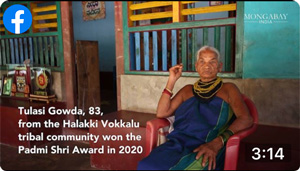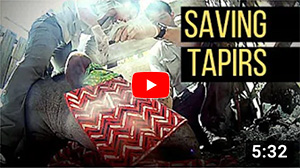![]()
HOLBOX, Mexico — The tour I’d arranged in Holbox wasn’t one of the usual packages. It isn’t advertised on social media or sold at the dozens of stalls along the white coral beach. The environmentalists who organized it didn’t take me swimming with whale sharks or to the lagoon where you can see caimans by day and bioluminescence during moonless nights. The activists, who asked me not to publish their names because they fear reprisals, call it “the terror trip ” and it includes all the environmental crimes and damages that this beautiful natural reserve in the Mexican Caribbean has experienced in the last few years: destroyed mangroves, wild garbage dumps, dried-up lagoons, noisy beach parties, trampled turtle nests, illegally built roads, and beaches eroded by ugly concrete buildings.
“It started around 2017,” says Alejandro Cañedo, hotel owner and president of the organization Fuerzas Vivas, a group of entrepreneurs, environmentalists and locals founded in 2021. “There were not enough hotel beds to accommodate all the people that wanted to visit the island. Holbox was completely booked the whole year, it was crazy.”
Seated in the air-conditioned restaurant of his hotel, Cañedo puts his cellphone and laptop aside for a moment. “Within three years, the number of beds tripled,” he says. Today, there are 150 hotels, shopping centers, 6,000 employees and 130 golf carts and quad bikes, the main forms of transportation on the island.
Holbox is a singular success story in the Caribbean, a highly competitive tourism destination. The island, surrounded by lush nature, where pelicans sleep sitting on wooden fishing boats, where streets are made of sand and only a few cars are allowed, didn’t need to offer discounts or invest in expensive marketing campaigns. Instagram was doing the job. “Everybody wants to live in paradise,” Cañedo smiles.
Two decades ago, there were only a dozen small hotels and 100 fishing families living on the island, a total population of no more than 2,000 people. There were no ATMs, almost no cars and no paved roads.
“Electricity only arrived in 1980,” says Leongina Avila, 49, who was born here and sells handicrafts. “We drank water from a well, and were self-sufficient, completely forgotten by the government. Tourism was nice back then. Visitors were scientists and environmentalists, some of them staying for a month. They were interested in nature and interacting with locals.”
When the government designated Holbox and the surrounding sea and mangroves as a natural reserve in 1994, the families who had been living there for generations were allowed to stay in a delimited part of the island called Isla Chica, roughly 5 kilometers long by 3 wide (3 miles by 2). Everything else was declared part of the Yum Balam Natural Reserve, or “Lord Jaguar” in the Yucatec Maya language.
But locals, many of whom had made a living from selling shark meat and fins, protested against the restrictions. A few of them got involved with some powerful Mexican political and entrepreneurial families who were promising them a lot of money for their land. The investors acquired dubious land titles even in the protected area, a move that has been legally contested by some of the islanders and became nationally known as the “Holbox scam.” Because of these conflicts, the reserve’s regulatory framework and management were only published in October 2018, after decades of legal vacuum.
Holbox, pronounced “hol-bosh,” is situated in the middle of a remote Indigenous area where the average wage is about $420 per month. But tourism in Holbox generates up to $200,000 annually, and everybody wants a share of it: entrepreneurs, politicians and locals in the surrounding communities where tourists only pass by.
“Managing a natural reserve with people living in the middle is never easy,” says one of the park rangers from Mexico’s National Commission for Protected Areas (CONANP), speaking on condition of anonymity because they’re not authorized to talk to the media. “But the real estate fever I have experienced here over the last few years is incomparable to any other reserve I have been to before. Laws are very difficult to enforce when so much money and powerful interests are at stake.”
New construction sites pop up every month, and only a handful of them comply with obligations such as a sewage treatment plant and maximum height limit for new builds (12 meters, or 40 feet). According to activists, new developments often start in peculiar ways: either with a fire, or with overnight clear-cuts by workers from mainland Mexico, shipped to Holbox in small boats after sunset.
When discovered, locals alert the park rangers. The latter then inspect the site, write a report to their superiors, and then three or four weeks later, officials from the Federal Environmental Agency (PROFEPA) arrive and close noncompliant building sites. Investors are fined, and a few weeks later, work resumes.
In July 2017, after a raid by the Federal Police, the army and environmental authorities, aggression against environmentalists by those targeted peaked. “We were threatened and had to leave the island for almost a year,” the park ranger says.
The absence of park rangers was perceived as an opportunity by new investors. They were encouraged by the local mayor at that time, Nivardo Mena (2018-2021), formerly an activist for the conservation of Holbox. But once in office, he started to hand out dozens of construction permits. Dubious realtors appeared on the island, selling the same property twice or three times to foreign investors, according to testimonies. Mena also privatized garbage collection, promising to resolve this urgent problem. But that didn’t happen: garbage continued to accumulate on the island, generating protests from locals.
In 2022, the trash concession was passed over to a group of Mexican firms called Concretos Sustentables Mexicanos, Solución de Residuos Kalan Kuxtal y Nómadas Playa. But they soon started to charge extra fees, causing angry locals to dump their old refrigerators and furniture in the mangrove forest near the harbor. The crisis remains unresolved to this day, with 90,000 metric tons of waste accumulated and threatening the ecosystem.
Other controversies piled up. In 2020, investors linked to the family of President Andrés Manuel Lopéz Obrador (better known as AMLO) were granted nearly 2.5 hectares (6 acres) of land in the protected area by the Ministry of the Environment. The minister resigned shortly thereafter, and the decree was reversed.
In March 2022, a new luxury resort was inaugurated in the middle of bird-nesting dunes in Punta Coco, with visitors arriving there by helicopters. That elicited more protests from conservationists.
The local taxes levied for garbage collection and sanitation were never transformed into public investments. Mena now lives on the mainland, like other local businesspeople and politicians earning a windfall from tourism. Last year, there were blackouts and water shortages for more than a month. Angry tourists canceled their reservations.
“It was a complete disorder,” Cañedo says. Holbox was trapped in too much tourism.
It was also taking a toll on the environment.
In 2009, conservationists counted 400 whale sharks (Rhincodon typus) in the waters around Holbox. In 2023, there were fewer than a dozen, biologist Emanuel Mimilla from local NGO Pronatura tells Mongabay.
“With tourists around, the whale sharks sometimes stopped eating,” he says. “They do banking, that is showing their back to intruders as a form of protection.”
Melania López, coordinator for the sea turtle conservation program at Pronatura’s Yucatán chapter, says they observed a “drastic decrease” in sea turtles in Isla Chica. The animals were deterred by noise and light.
Leongina Avila, the longtime resident, says she used to go fishing in the shallow waters early in the morning many years ago. “But there is nothing to catch anymore,” she says.
López says everything points to a perfect storm for Holbox. ”Just add climate change, hurricanes, rising sea levels, a fragilized environment and corruption,” she says.
She adds she fears the boom could reach the protected eastern part of the island, now a hotspot for turtles.
“There are huge economic interests,” Lopéz says. “It is hard to stop development completely, but at least we put a number of safeguards in the management plan such as a prohibition to develop or construct infrastructure in the conservation area at the eastern part or the island.”
Entrepreneurs are also starting to worry about the negative impacts that their success has wrought.
“We don’t want Holbox to lose its essence,” Cañedo says. Fuerzas Vivas, for example, has set up public trash cans and organizes private garbage collection. It finances the local police station and prohibits campfires and bicycles on the beach. It works with environmentalists on ecological awareness campaigns. Park rangers, too, have softened their strategy and are now working with persuasion, trying to avoid direct confrontation with investors and locals.
But it’s hard work: an event in July about the circular economy, led by international cooperation organizations, drew barely 100 visitors.
“The only thing people are interested in is money,” Avila says. “It is more powerful than the quality of life or the environment.”
Banner image: In Holbox, local communities are putting up a fight against the real estate boom. Image by Sandra Weiss.


View targeted feeds![]() Instagram
Instagram![]() LinkedIn
LinkedIn![]() YouTube
YouTube
![]() Mastodon
Mastodon![]() RSS / XML
RSS / XML![]() Android mobile app
Android mobile app![]() Apple News
Apple News![]()
Mongabay is a U.S.-based non-profit conservation and environmental science news platform. Our EIN or tax ID is 45-3714703.![]()
© 2023 Copyright Conservation news
you're currently offline